The Blue Pill
(aka ‘magical thinking’ or being ‘away with the fairies’)
We don’t need Fossil Fuels we will just use electricity!
Electricity is not a source of power it is a conduit of power, you don’t drill a hole in the ground, poke a wire down it and electricity starts flowing.They think electricity just comes out of a socket in the wall. Somebody somewhere is tending equipment that converts some other form of energy into electricity.
From the data below it doesn’t take much intellect to see that ‘Zero Carbon’ and ‘Fossil Free’ is a massive challenge.
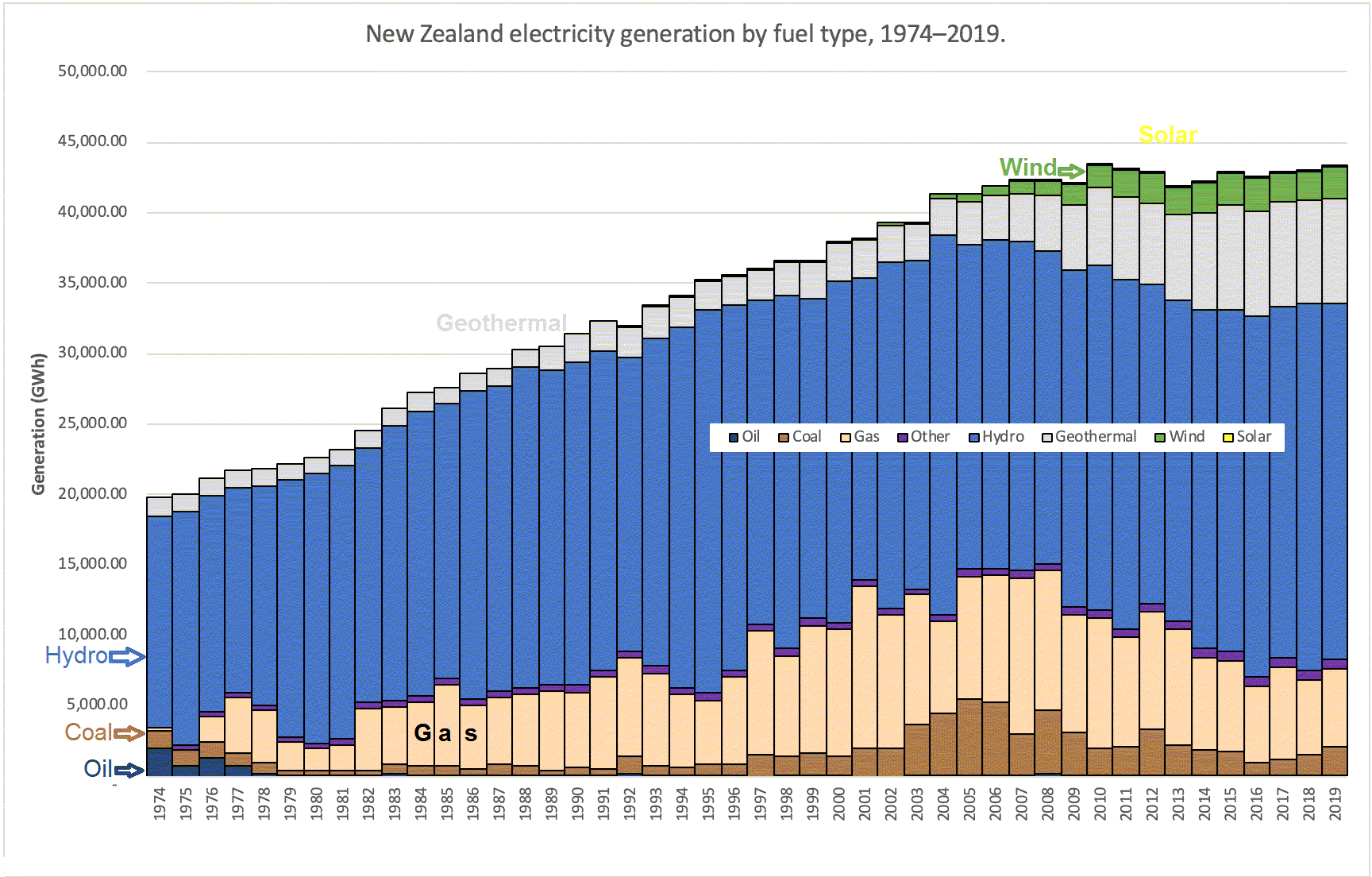
https://en.wikipedia.org/wiki/Electricity_sector_in_New_Zealand
Notice solar is not even visible along the top of the chart and wind has not grown much in a decade.
Notice hydro has not grown for decades, all good opportunities have been used already as hydro is a good EROI energy source. Geothermal also is not situated for easy growth either, most low hanging fruit has been picked. (It should be noted the geothermal is not without green house emissions))
Total generation is about 44,000 GWhr which is about 158PJ
Total energy consumption of New Zealand is 900PJ, some as electricity.
Thus electricity consumption is currently 17.5% of New Zealand’s total energy consumption
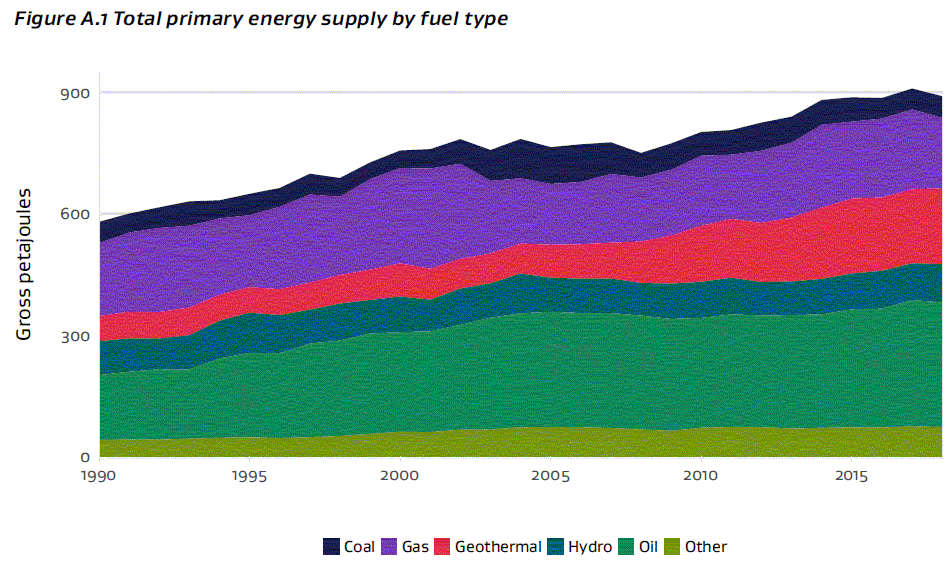
It is worth noting that our primary energy supply (891PJs) differs from our actual consumption of energy (589PJs) by over 300PJs. This is because a portion of our primary energy supply (around one third) is used up in the process of 'transforming' it from an initial raw state (like geothermal steam energy) into a useable form (electricity). Significant quantities of energy are lost in the process of energy transformation and in the distribution/energy management process (EROI).
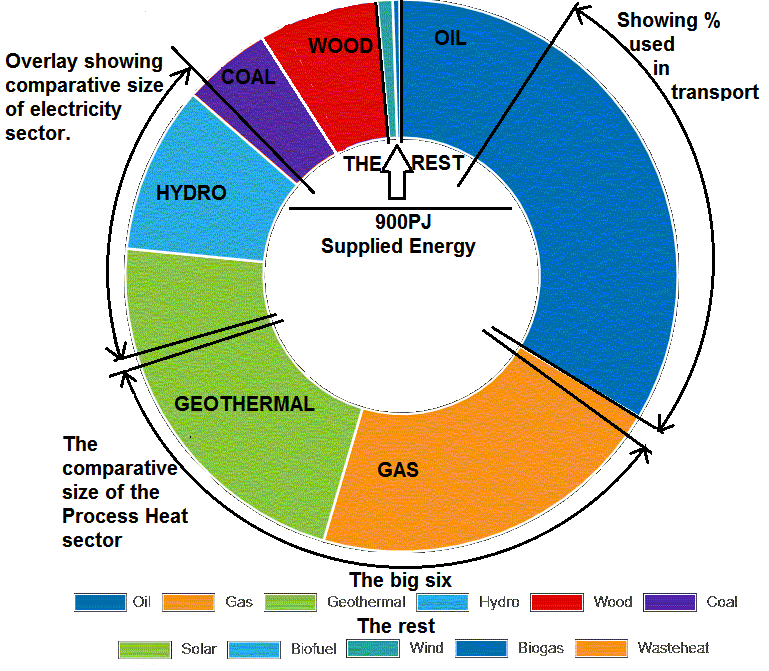
New Zealand total Energy supply is 891PJ:
- Oil 307PJ
- Geothermal 188PJ
- Gas 174PJ
- Hydro 95PJ
- Wood 61PJ
- Coal 53PJ
- Wind 7PJ
- Solar 0.7PJ
Energy use per sector:/p>
- Industry 34%
- Transport 36%
- Domestic 11%
- Commercial & Public Services 9%
- Agriculture, Forest, Fish 4.7%
Consumer energy demand:/p>
- Oil 48%
- Electricity 24%
- Gas 12.5%
- Other renewables 9.7%
- Geothermal 1.3%
- Coal 4.1%
Wind and solar will fill the power generation gap! (NOT)
Wind and Solar have taken over 20 years to reach nearly 1% of New Zealand's energy needs (900PJ).
At that rate it will take FOREVER to build enough windturbines to replace the fossil Fuels. As windturbines have a expected life span of 20-30 years, then 3-4% of turbines need replaced every year.
If we had enough windturbines to replace 25% of Fossil Fuel Energy how many would that be?
NZ uses about 550PJ of Fossil Fuel per year, let us assume we need 125PJ of wind produced electricity for that 25%.
The new wind farm going in at Waipipi has 31 windturbines with a total nameplate capacity of 133MW, 455GWh or 1.64PJ output. Personally I would expect them to only produce 300GWh or 1PJ , enough for Auckland’s EV busses.
https://www.tiltrenewables.com/assets-and-projects/waipipi-wind-farm/
Even using their optimistic numbers we need 2362 similar windturbines to replace 25% of Fossil Fuel energy.
At the cost of Waipipi this generation capacity will cost $35B
3% of 2362 is 70 turbines need replaced every year. (About $1B per year on replacements)
If Waipipi only produces 1PJ then we need 125 similar wind farms to produce that amount of power, and we need to replace 4 Waipipi wind farms every year. This Waipipi wind farm is costing $277M, the value of electricity produced per year is (at $40 per MWh) is about $18M per year thus will take approx 15 years to return the construction cost.
Converting nameplate capacity into actual annualized generation capacity
In order to find out how much energy the wind turbines produce you have to know the distribution of wind speeds for each turbine. In Denmark's case, the average wind turbines will return 2,300 hours of full load operation per year. To get total energy production you multiply the 1000 MW of installed power with 2,300 hours of operation = 2,300,000 MWh = 2.3 TWh of energy. (Or 2,300,000,000 kWh).
In other areas, like Wales, Scotland, or Western Ireland you are likely to have something like 3,000 hours of full load operation or more. In Germany the figure is closer to 2,000 hours of full load operation.
SOLAR PANELS
Solar panels? They cost about $1 per Watt nameplate capacity, actual capacity is approx 10% of nameplate capacity.
So $10 per watt actual capacity through the year.
To provide the 125PJ we need 40GW of installed solar panel nameplate capacity. $40B of panel
So if we install $100B of wind and solar we could reduce our Fossil Fuel demand by 50%
But the ongoing replacement costs will lead to poverty. The EROI is not high enough.
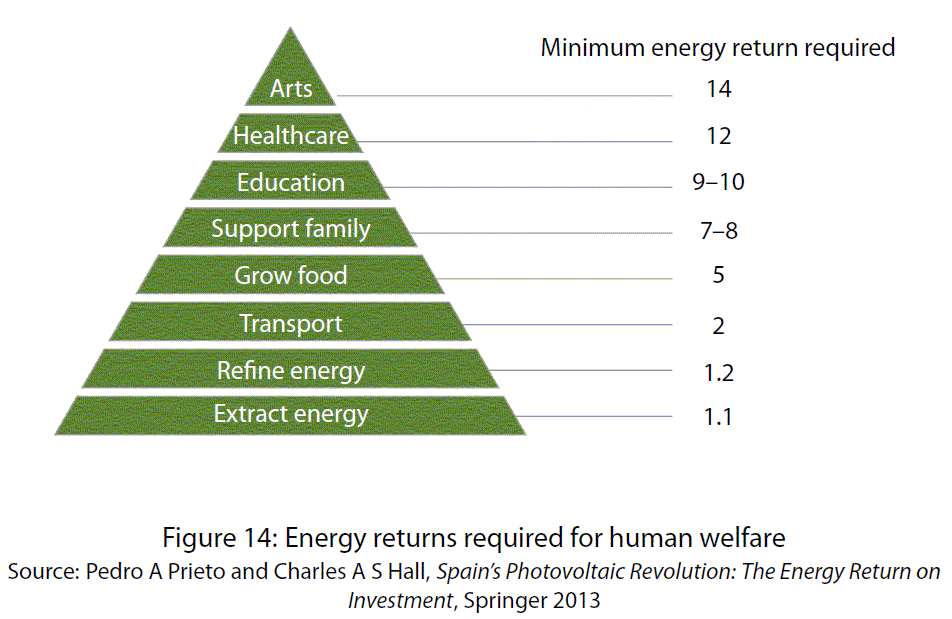
Let’s just keep burning coal and buy cheap carbon credits.
This has been New Zealand’s story up till the end of 2020, however these fraudulent credits expire at the end of 2020.
This road is trod by cynical climate change hypocrites, why play lip service to this emissions mitigation if you don’t mean it? Answer: to make money.
http://morganfoundation.org.nz/wp-content/uploads/2016/04/ClimateCheat_Report8.pdf
It is hard to read the future especially when taking into account the fickleness of mankind and governments. Who at the beginning of 2020 foreknew that the global economic dynamo of the world was going to be shut down?
Though Carbon credits have been $25NZD for the longest time we have to assume under the Paris Agreement (if it isn’t overruled) that Carbon credits will rise to $40-$50 very soon (by 2025) and possibly to $100 by 2030.
Something will be developed like a super battery that never runs out
As I write this the cheapest simplest batteries ($ per Wh) are still flooded lead acid which were invented in 1859. And they even have a good scrap value once they have no use.
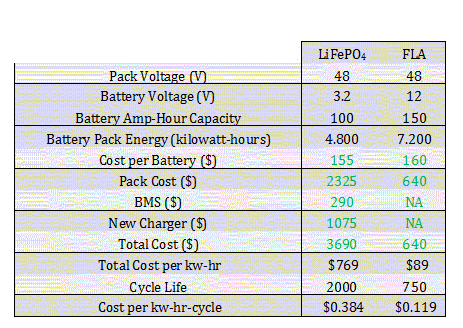
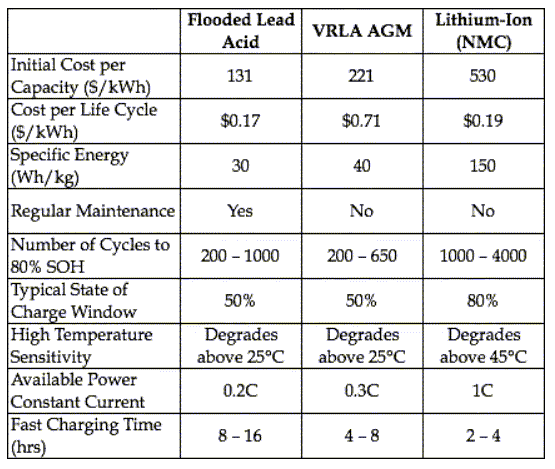
https://www.usbattery.com/lithium-vs-flooded-lead-acid-batteries/
I agree Lithium are ‘better’ but down to simple $ per watt hour storage they are no better.
So the likelihood after 160 years we suddenly have really good batteries that follow Moores law of cost vs performance improvements suddenly cropping up is slim.
But we live in hope.
Nuclear fusion will be ready in 5 years.
LOL……
Certainly isn’t an option for New Zealand in the next 30 years.
We need more power generation capacity NOW, and certainly within 5 years with Electrification of Transport and Process Heat
We can keep on using coal because we are planting a billion trees.
Of course the politicians keep on calling half a billion a billion, some sort of inflation.
The reality is we need to plant 1.5 billion extra trees to cover our net emissions, whether or not we have enough marginal land for an extra 1.5million hectares of pine trees, I don’t know.
But
There is the issue of sequestration failure (fire and disease) and what happens when the trees reach maturity?
Let us get rid of all industry (eg Tiwai smelter), because they use all the power, and then there will be plenty of power to charge all our EVs.
New Zealand needs the foreign currency that the Smelter brings in.
Globally the ‘Green’ aluminium from Tiwai is preferable to many sources of Aluminium. https://en.wikipedia.org/wiki/Tiwai_Point_Aluminium_Smelter#Environmental_effects
The smelter's power demand from the national grid is about 570 MW. Most of the energy for the smelter is supplied from the Manapouri hydroelectric power station, via two double circuit 220 kV transmission lines. The facility is the largest electricity consumer in New Zealand, and uses approximately one third of the total electricity consumed in the South Island and 13% of the total electricity nationwide, equivalent to about 680,000 households.
The 15PJ-20Pj of power that Tiwai uses if directed to Auckland probably would attenuate to 10PJ by time it reaches the user. By 2030 the country probably needs 450PJ of electricity so 10PJ will seem a bit insignificant. Best to keep making aluminium, we certainly don’t want to import aluminium made with coal powered electricity.
Natures Flame make wood pellets already, why do you think biocoal is needed.
Natures Flame is based on an economic model that could never effectively use ‘in forest harvest residue’.
Their process has a very low (maybe negative) EROI thus can never solve New Zealand’s Fossil Free energy crisis
Biomass will never be cost effective, why bother.
If the raw material is free and the process is self powered it has a good chance of being cost effective.
Woody biomass is the only bioenergy that harvests a multi decade accumulation of energy, as opposed to many bioenergy crops that accumulate one season of energy per harvest. This places Biocoal in a strong position.
The government already pays SCION to develop bioenergy, they are the experts.
Absolutely, SCION receives in excess of $50M per year, but there is not any sizeable contribution of wood energy to the national energy budget. (except within the sawmilling, veneer and pulp industry) Natures Flame is not a sizeable nett contribution due to its high energy consumption.
Nuclear Power is just what we need in New Zealand
If New Zealand doesn’t pull its act together poverty and Nuclear Power are the only option by 2050
Nuclear power is not outlawed in New Zealand, it should be.
New Zealand cannot afford the financial noose that Nuclear Power would be.
Also we don’t want the civil unrest that would come with such a proposal
Nuclear Power would increase off shore dependence and reduce rural employment
Please reconsider your opinion that we don’t need BIOCOAL
The first problem with explaining the need for a Biocoal industry is that the industry has a very broad base that involves and impacts many sectors of the socio-economic spectrum. The second problem is for full understanding there are many overlapping areas of technical knowledge. That being said it isn’t ‘Rocket Science’ and anybody who is interested can understand the topic and understand the importance of it.




